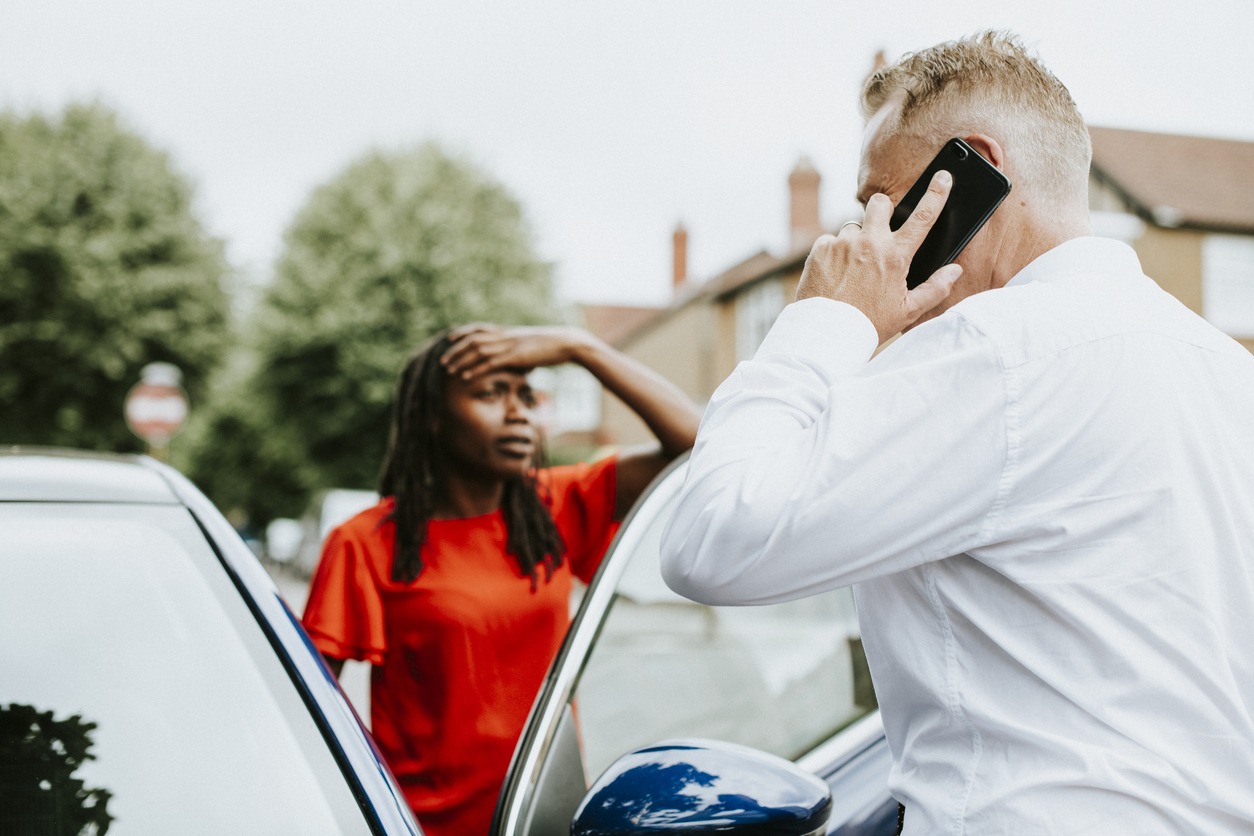Many drivers are familiar with the sticker shock of a car repair bill, but the true financial fallout from a major car wreck extends far beyond dented bumpers and deployed airbags. In 2025, the total cost—factoring in medical treatment, lost income, and long-term care—can easily spiral into the hundreds of thousands of dollars. While the U.S. property and casualty insurance industry forecasts a return to profitability for personal auto lines, the severity of claims and the financial burden on individuals continue to climb. This raises a crucial question for every driver: after a serious collision, who actually pays for everything?
This article is a definitive financial guide, tracing the money from the moment of impact to the final settlement. It will unpack the insurance policies, follow the circuitous path of payments, and demystify how abstract concepts like pain and suffering are converted into monetary compensation. Understanding this process is essential for protecting your financial well-being in the chaotic aftermath of an accident.
The Insurance Maze: Unpacking Your 2025 Policy
Immediately following a major car wreck, the first financial safety nets that come into play are the insurance policies held by those involved. However, where the money comes from first is not always straightforward; it is dictated by state law and the specific coverage each driver has purchased. This initial phase determines the entire trajectory of the claims process and who is responsible for the initial wave of bills.
At-Fault vs. No-Fault States: The First Financial Fork in the Road
The United States is divided into two primary systems for handling car accident claims: at-fault and no-fault. In an at-fault state, the driver responsible for the crash is liable for the financial damages. Their liability insurance is tapped to pay for the other party's medical bills, vehicle repairs, and other losses. In a no-fault state, the system is different. Your insurance policy, specifically your Personal Injury Protection (PIP) coverage, pays for your initial medical bills and lost wages, regardless of who caused the crash. This distinction is the first critical step in the financial journey after a wreck, determining whether you first turn to your insurer or the other driver.
Decoding the Key Coverage Types in Your Policy
Your auto insurance policy isn't a single fund; it's a collection of different coverage types, each with its purpose and limit. Understanding these buckets of money is critical, especially as some states increase their mandatory minimums. For instance, California recently raised its required liability limits for bodily injury, which offers more protection to victims but exposes underinsured drivers to greater personal financial risk if they cause a serious crash. The table below breaks down the key coverage types and who they serve in a typical 2025 scenario.
| Coverage Type | Who/What It Primarily Pays For | Common 2025 Scenario |
|---|---|---|
| Bodily Injury Liability | The other party's medical bills, lost wages, and pain & suffering. | If you cause an accident, your policy pays for the injuries of the other car's driver and passengers. |
| Property Damage Liability | The other party's vehicle repairs or replacement. | You rear-end someone, and this coverage pays to fix their car. |
| Collision | Repairs to your car after an accident you cause. | You hit a pole, and this pays to fix your car after you pay your deductible. |
| Uninsured/Underinsured Motorist (UM/UIM) | Your medical expenses and lost wages if the at-fault driver has little or no insurance. | You are hit by a driver with minimum-level coverage that doesn't cover your extensive hospital stay. |
| Personal Injury Protection (PIP) / Medical Payments (MedPay) | Covers your medical bills and those of your passengers regardless of who is at fault. | Used in no-fault states or as optional coverage to pay initial medical bills quickly. |
Following the Money: How Bills Actually Get Paid in 2025
Once a claim is filed, the money does not simply flow from an insurance company into a victim's bank account. Instead, it follows a complex and often lengthy path through various entities, each demanding its share of the potential settlement. This process is riddled with friction points, as each player—from hospitals to auto mechanics—jockeys for position to get paid.
From Claim to Compensation: The Key Financial Players
After an accident, a successful insurance claim results in funds being disbursed to cover a wide array of debts and losses. The order and method of these payments can confuse those unfamiliar with the system. Here is the typical path that money takes.
- Medical Providers: Hospitals, surgeons, and physical therapists are often at the front of the line. In many cases, they will first bill the victim's private health insurance. After treatment, they may place a legal claim, a medical lien, on the future personal injury settlement. This ensures they are reimbursed from the at-fault party's liability coverage before the victim receives any funds for pain and suffering.
- Auto Repair Shops: Insurers typically require one or two detailed estimates before authorizing payment for vehicle repairs. This part of the claims process is under intense scrutiny. With soaring costs for parts and labor contributing to a 34% increase in claim expenses from 2019 to 2023, insurers are meticulously reviewing every line item, which can delay repairs for weeks.
- The Injured Victim: The injured victim is the final recipient of funds. Compensation for tangible losses like lost income and out-of-pocket expenses (such as prescriptions or transportation to doctor's appointments) is calculated and added to the settlement. However, this money and compensation for non-economic damages are usually paid last, after all other medical and property liens have been satisfied.
The Insurer's Playbook: Why Your Interests and Theirs Diverge
At its core, the insurance industry is a business. Its profitability hinges on a simple formula: collecting more in premiums than payouts in claims. While the personal auto sector is projected to be profitable in 2025, this financial success is often achieved by employing strategies designed to minimize payouts to claimants. Common tactics include offering a quick, lowball settlement before the full extent of a victim's injuries is known, disputing the necessity or cost of certain medical treatments, and using recorded statements to catch victims in minor inconsistencies that can be used to question the validity of their claim.
Because of these adversarial tactics, many victims seek professional help to navigate the process. Navigating this complex process can be overwhelming, so understanding your options and knowing when to consult a car accident lawyer near me is critical to managing your finances after a crash.
Valuing the Intangible: How Pain and Suffering Become a Number
One of the most bewildering aspects of a car accident settlement is the compensation for non-economic damages, commonly known as pain and suffering. This isn't about paying a specific bill but assigning a monetary value to the human cost of an injury. Understanding how this figure is calculated is key to grasping the full financial picture of a settlement.
What Legally Constitutes Pain and Suffering?
Pain and suffering is legalese for the total negative impact an injury has on your life, beyond just medical bills. It covers the physical pain from the injury itself, the emotional toll (like fear, anxiety, or depression), and the loss of enjoyment of life when you can no longer do the hobbies and activities you love.
Illustrative Case Studies for 2025
Hypothetical scenarios help illustrate how these financial principles apply in the real world.
Scenario 1: The Multi-Car Pile-Up. Imagine a three-car pile-up on I-90. Driver A is at fault and carries the state-minimum liability insurance. Driver B suffers moderate injuries, while Driver C's injuries are severe, requiring surgery and months of rehabilitation. Driver A's bodily injury liability limit is quickly exhausted, paying for only a fraction of Driver C's medical bills. In this case, both Driver B and Driver C must turn to their insurance policies, specifically their Underinsured Motorist (UIM) coverage, to pay for the remainder of their medical bills and lost wages. This shows why carrying robust UIM coverage is a vital financial protection.
Scenario 2: The Commercial Truck Collision. Now, consider a passenger car that is sideswiped by a large commercial delivery truck. The trucking company's commercial liability policy is substantial, often $1 million or more. However, the insurer and its lawyers will fight aggressively to minimize the payout, frequently arguing that the passenger car driver was partially at fault to reduce their liability. This aggressive defense reflects the intense profitability pressure across all general liability insurance lines, making these cases a prolonged and contentious battle over every dollar.
Your Financial Rights Are Your Most Important Asset After a Wreck
The flow of money after a major car wreck is a complex, multi-stage process governed by insurance policies, state laws, and the financial interests of multiple parties. The system is fundamentally adversarial, with powerful insurance companies motivated to protect their bottom line, often at the expense of injured victims. This structure makes it incredibly challenging for individuals to secure full and fair compensation for all their losses, from tangible medical bills and lost wages to the profound, intangible cost of pain and suffering.
In an era of rising costs and complex claims, being armed with this knowledge isn't just about smart money management; it's about safeguarding your financial future after an unexpected and devastating event.














